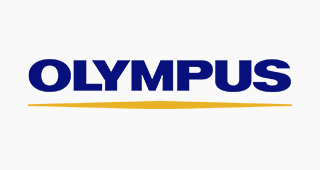SIU-WJU Article of the Month – December 2017
When compared with SWL and PCNL, RIRS offers high stonefree rate with minimal complications for 1-2 cm lower pole stones.
SIU Academy®. Presenters F. 12/01/17; 204537
Topic: Surgical Management of Lower Urinary Tract CalculiWhen compared with SWL and PCNL, RIRS offers high stonefree rate with minimal complications for 1-2 cm lower pole stones.

Ahmed Ibrahim

Sero Andonian
REGULAR CONTENT
Login now to access Regular content available to all registered users.
To have an exclusive access to the entire content available on SIU Academy, become an SIU Member here.
To have an exclusive access to the entire content available on SIU Academy, become an SIU Member here.
Abstract
Discussion Forum (0)
Rate & Comment (0)
Purpose
To prospectively evaluate the efficacy and safety of RIRS, SWL and PCNL for lower calyceal stones sized 1–2 cm.
Materials and Methods
Patients with a single lower calyceal stone with an evidence of a CT diameter between 1 and 2 cm were enrolled in this multicenter, randomized, unblinded, clinical trial study. Patients were randomized into three groups: group A: SWL (194 pts); group B: RIRS (207 pts); group C: PCNL (181 pts). Patients were evaluated with KUB radiography (US for uric acid stones) at day 10 and a CT scan after 3 months. The CONSORT 2010 statement was adhered to where possible. The collected data were analyzed.
Results
The mean stone size was 13.78 mm in group A, 14.82 mm in group B and 15.23 mm in group C (p = 0.34). Group C compared to group B showed longer operative time [72.3 vs. 55.8 min (p = 0.082)], fluoroscopic time [175.6 vs. 31.8 min (p = 0.004)] and hospital stay [3.7 vs. 1.3 days (p = 0.039)]. The overall stone-free rate (SFR) was 61.8% for group A, 82.1% for group B and 87.3% for group C. The re-treatment rate was significantly higher in group A compared to the other two groups, 61.3% (p < 0.05). The auxiliary procedure rate was comparable for groups A and B and lower for group C (p < 0.05). The complication rate was 6.7, 14.5 and 19.3% for groups A, B and C, respectively.
Conclusion
RIRS and PCNL were more effective than SWL to obtain a better SFR and less auxiliary and re-treatment rate in single lower calyceal stone with a CT diameter between 1 and 2 cm. RIRS compared to PCNL offers the best outcome in terms of procedure length, radiation exposure and hospital stay.
ISRCTN 55546280.
Keywords
PCNL | RIRS | SWL | Lower pole stone
To prospectively evaluate the efficacy and safety of RIRS, SWL and PCNL for lower calyceal stones sized 1–2 cm.
Materials and Methods
Patients with a single lower calyceal stone with an evidence of a CT diameter between 1 and 2 cm were enrolled in this multicenter, randomized, unblinded, clinical trial study. Patients were randomized into three groups: group A: SWL (194 pts); group B: RIRS (207 pts); group C: PCNL (181 pts). Patients were evaluated with KUB radiography (US for uric acid stones) at day 10 and a CT scan after 3 months. The CONSORT 2010 statement was adhered to where possible. The collected data were analyzed.
Results
The mean stone size was 13.78 mm in group A, 14.82 mm in group B and 15.23 mm in group C (p = 0.34). Group C compared to group B showed longer operative time [72.3 vs. 55.8 min (p = 0.082)], fluoroscopic time [175.6 vs. 31.8 min (p = 0.004)] and hospital stay [3.7 vs. 1.3 days (p = 0.039)]. The overall stone-free rate (SFR) was 61.8% for group A, 82.1% for group B and 87.3% for group C. The re-treatment rate was significantly higher in group A compared to the other two groups, 61.3% (p < 0.05). The auxiliary procedure rate was comparable for groups A and B and lower for group C (p < 0.05). The complication rate was 6.7, 14.5 and 19.3% for groups A, B and C, respectively.
Conclusion
RIRS and PCNL were more effective than SWL to obtain a better SFR and less auxiliary and re-treatment rate in single lower calyceal stone with a CT diameter between 1 and 2 cm. RIRS compared to PCNL offers the best outcome in terms of procedure length, radiation exposure and hospital stay.
ISRCTN 55546280.
Keywords
PCNL | RIRS | SWL | Lower pole stone
Purpose
To prospectively evaluate the efficacy and safety of RIRS, SWL and PCNL for lower calyceal stones sized 1–2 cm.
Materials and Methods
Patients with a single lower calyceal stone with an evidence of a CT diameter between 1 and 2 cm were enrolled in this multicenter, randomized, unblinded, clinical trial study. Patients were randomized into three groups: group A: SWL (194 pts); group B: RIRS (207 pts); group C: PCNL (181 pts). Patients were evaluated with KUB radiography (US for uric acid stones) at day 10 and a CT scan after 3 months. The CONSORT 2010 statement was adhered to where possible. The collected data were analyzed.
Results
The mean stone size was 13.78 mm in group A, 14.82 mm in group B and 15.23 mm in group C (p = 0.34). Group C compared to group B showed longer operative time [72.3 vs. 55.8 min (p = 0.082)], fluoroscopic time [175.6 vs. 31.8 min (p = 0.004)] and hospital stay [3.7 vs. 1.3 days (p = 0.039)]. The overall stone-free rate (SFR) was 61.8% for group A, 82.1% for group B and 87.3% for group C. The re-treatment rate was significantly higher in group A compared to the other two groups, 61.3% (p < 0.05). The auxiliary procedure rate was comparable for groups A and B and lower for group C (p < 0.05). The complication rate was 6.7, 14.5 and 19.3% for groups A, B and C, respectively.
Conclusion
RIRS and PCNL were more effective than SWL to obtain a better SFR and less auxiliary and re-treatment rate in single lower calyceal stone with a CT diameter between 1 and 2 cm. RIRS compared to PCNL offers the best outcome in terms of procedure length, radiation exposure and hospital stay.
ISRCTN 55546280.
Keywords
PCNL | RIRS | SWL | Lower pole stone
To prospectively evaluate the efficacy and safety of RIRS, SWL and PCNL for lower calyceal stones sized 1–2 cm.
Materials and Methods
Patients with a single lower calyceal stone with an evidence of a CT diameter between 1 and 2 cm were enrolled in this multicenter, randomized, unblinded, clinical trial study. Patients were randomized into three groups: group A: SWL (194 pts); group B: RIRS (207 pts); group C: PCNL (181 pts). Patients were evaluated with KUB radiography (US for uric acid stones) at day 10 and a CT scan after 3 months. The CONSORT 2010 statement was adhered to where possible. The collected data were analyzed.
Results
The mean stone size was 13.78 mm in group A, 14.82 mm in group B and 15.23 mm in group C (p = 0.34). Group C compared to group B showed longer operative time [72.3 vs. 55.8 min (p = 0.082)], fluoroscopic time [175.6 vs. 31.8 min (p = 0.004)] and hospital stay [3.7 vs. 1.3 days (p = 0.039)]. The overall stone-free rate (SFR) was 61.8% for group A, 82.1% for group B and 87.3% for group C. The re-treatment rate was significantly higher in group A compared to the other two groups, 61.3% (p < 0.05). The auxiliary procedure rate was comparable for groups A and B and lower for group C (p < 0.05). The complication rate was 6.7, 14.5 and 19.3% for groups A, B and C, respectively.
Conclusion
RIRS and PCNL were more effective than SWL to obtain a better SFR and less auxiliary and re-treatment rate in single lower calyceal stone with a CT diameter between 1 and 2 cm. RIRS compared to PCNL offers the best outcome in terms of procedure length, radiation exposure and hospital stay.
ISRCTN 55546280.
Keywords
PCNL | RIRS | SWL | Lower pole stone
Code of conduct/disclaimer available in General Terms & Conditions
{{ help_message }}
{{filter}}






